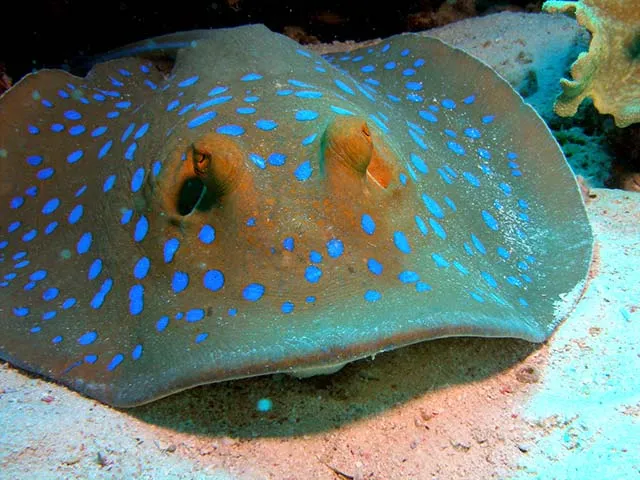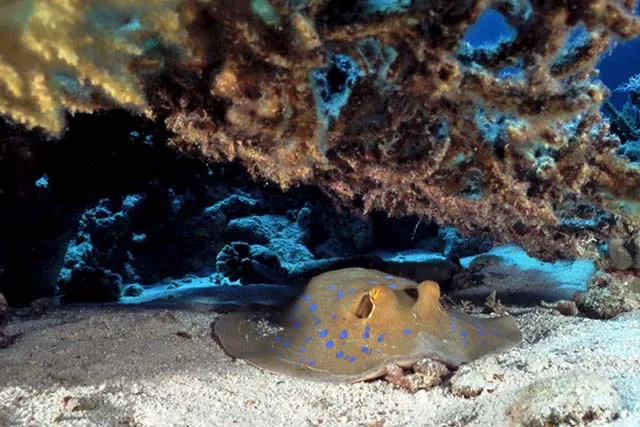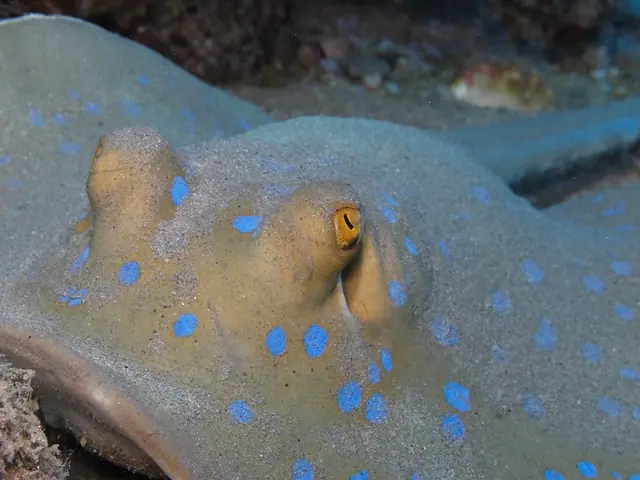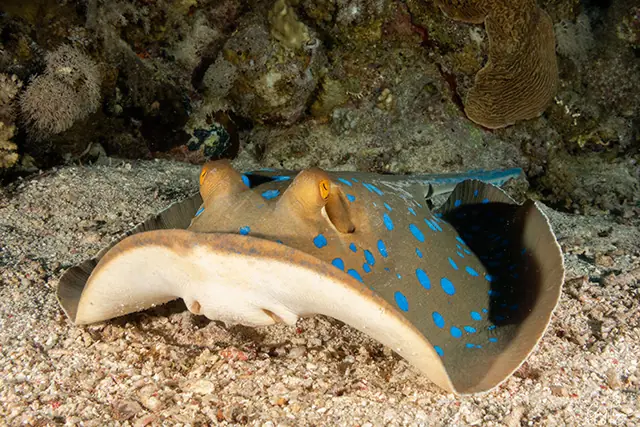1. How long blue spotted stingrays’ live
You’re not alone. Surprisingly no-one has yet found out how long these fish live. However, the lifespan of similar rays is around 10 years.

2. Females have better electrosensitivy than males
Rays are able to detect electrical impulses made by other underwater creatures, which helps them catch prey. They do this using thousands of electrosensitive units known as the ampullae of Lorenzini, and female blue spotted stingrays have more of these than males. Scientists think that as well as prey detection, this difference might also help females to identify other blue spotted stingrays, distinguishing between a potential mate and an approaching predator.

3. How to treat a sting
These rays are not aggressive towards divers, but if you should accidentally step on one the spine may be driven into your leg. This causes intense pain, increasing for around 90 minutes and lasting, if untreated, for one to two days. In this case don’t rub the wound – this will make things worse. Immersing in hot water may relieve the pain. Seek medical advice. The venomous spines of the ray are at the base of the tail.

4. Some mothers’ pregnancies are 4 months, others 7
This varies greatly between individuals. An aquarium studying them found that a gestation period could last anything from four to seven months. When they give birth they do so live young, unlike many fish who lay eggs. A blue spotted stingray mother can have up to 7 pups.
5. How they breathe
These rays have a hole behind their eyes called a spiracle. They draw water through these and then expel it through gill slits on their undersides. This helps them breathe whilst lying on the sand.
6. They have many names
Red Sea divers know them as blue spotted stingrays. But elsewhere in the world they are called bluespotted ribbonray, ribbontail stingray, bluespotted fantail ray, blue spotted lagoon ray – and that’s just some of the English names for this ray. Scientists know it as Taeniura lymma.

Further reading and references
Kempster et al, Sexual Dimorphism of the Electrosensory System: A Quantitative Analysis of Nerve Axons in the Dorsal Anterior Lateral Line Nerve of the Blue-Spotted Fantail Stingray (Taeniura lymma). Brain Behav Evol 2013;81:226–235 DOI: 10.1159/000351700
The Elasmobranch Husbandry Manual II: Recent Advances in the Care of Sharks, Rays and their Relatives, pages 325-330
Diving with Blue Spotted Stingrays
Main photo credit: Martin Str/Pixabay

















